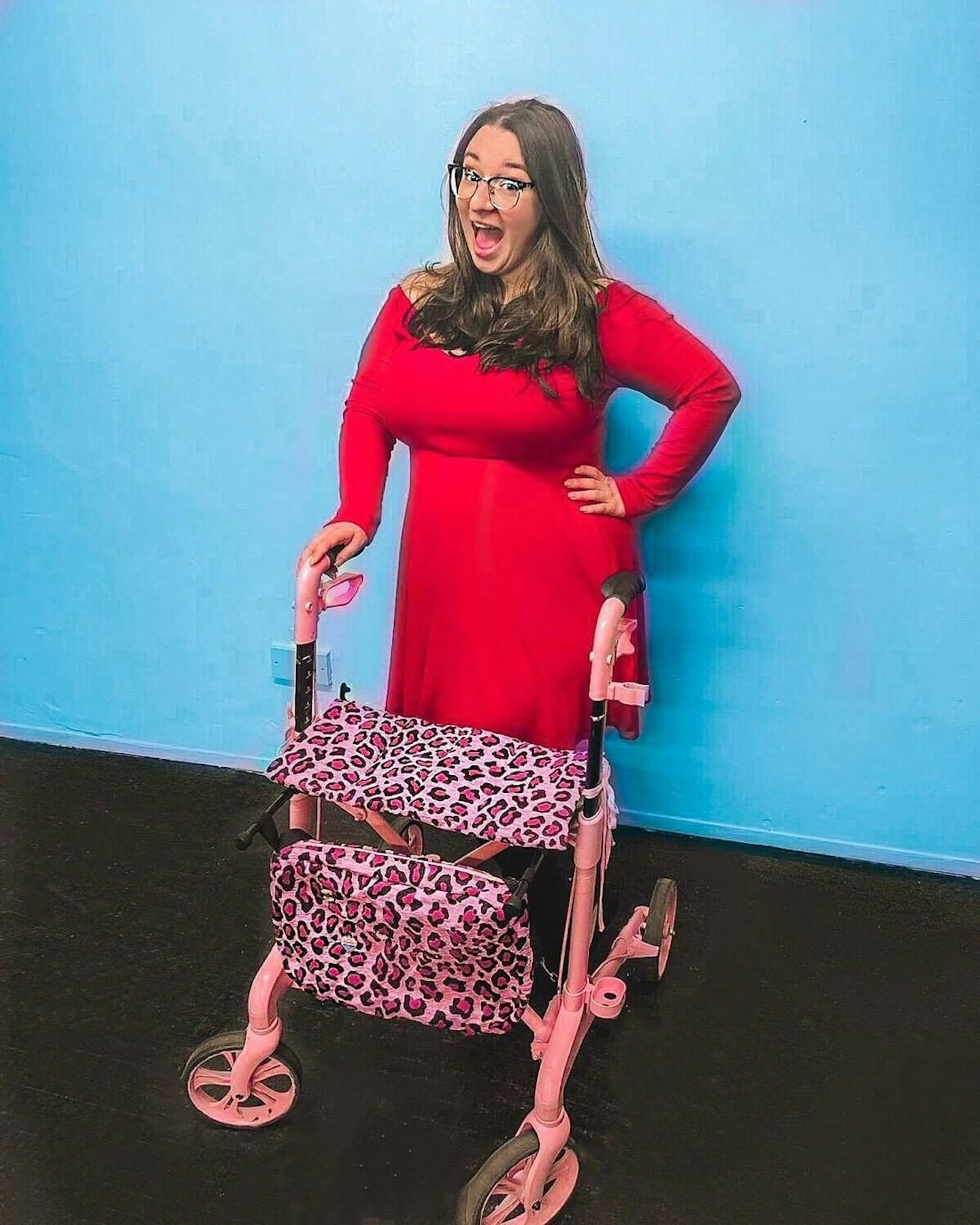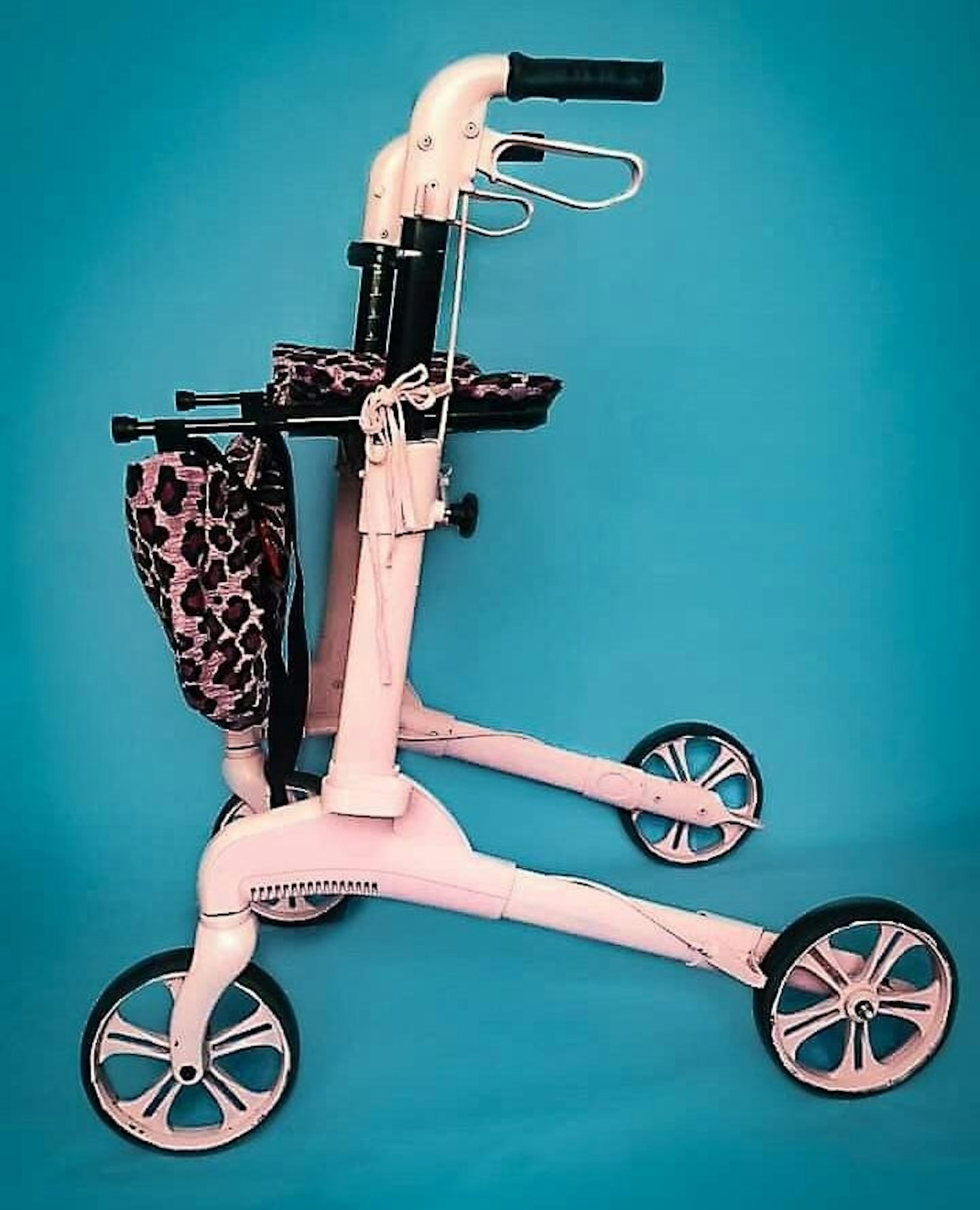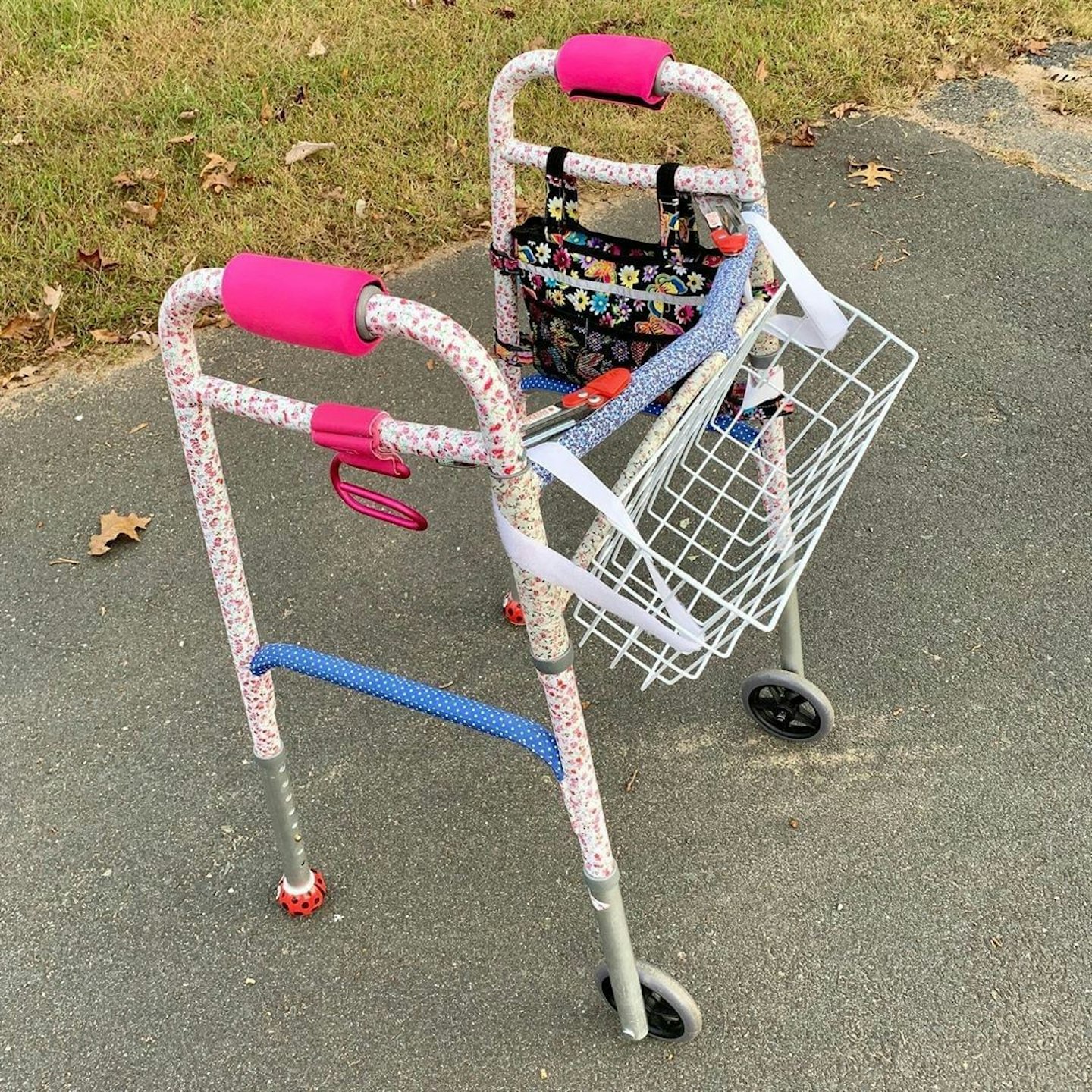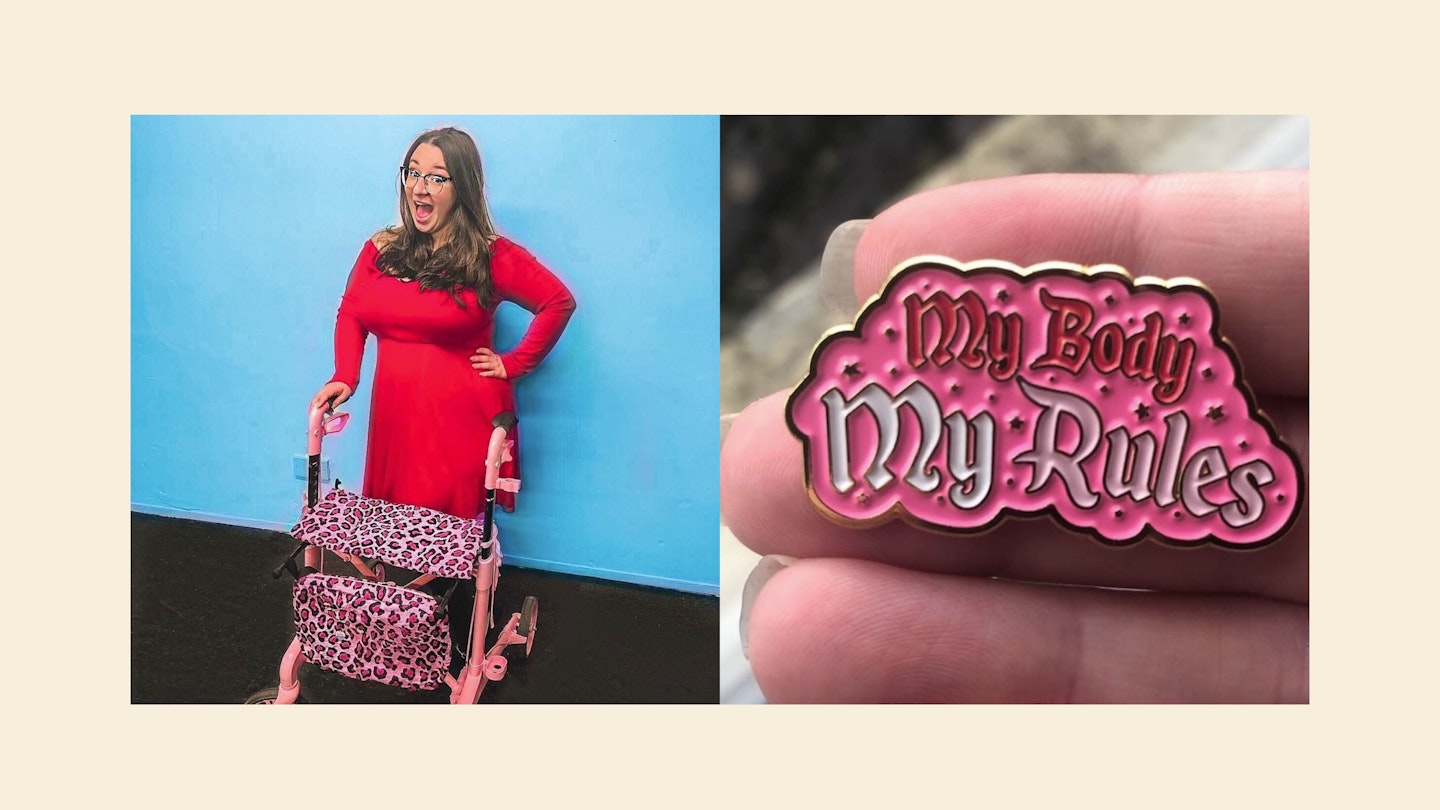When recent photographs emerged of Lena Dunham using a cane, she swiftly addressed them on Instagram. ‘I could choose to be embarrassed by these paparazzi pics […] but I’m really not,’ the Girls writer and director wrote. ‘This is what life is like when I’m struggling most with chronic illness. An Ehler-Danlos syndrome flare means that I need support from more than just my friends... so thank you, sweet cane!’
‘For years, I resisted doing anything that would make my physical situation easier, insisting that a cane would “make things weird.” But it’s so much less weird to actually be able to participate than to stay in bed all day.’
Lena then went onto explain that the photograph encapsulates ‘the two-fold life of a woman with chronic illness,’ adding ‘we still rock our dreams and goals and passions (and fashions) and we live many lives in one day.’
According to Hannah Hoskins – a 29-year-old woman who has fibromyalgia and uses mobility aids - posts like Lena’s are significant. ‘It’s so important,’ Hannah tells me over the phone, adding that people like Hollywood actress Selma Blair – who publicly documents her experience of multiple sclerosis - are also contributing to the conversation. ‘The more people see it, the more it’s normalised,’ Hannah says.
Four years ago, Hannah was diagnosed with fibromyalgia - a misunderstood, chronic condition that causes widespread pain around the body, problems with mental processing (known as ‘fibro fog’), extreme fatigue, muscle stiffness and headaches. Hannah has used a plethora of aids since her diagnosis and has noticed how ‘differently’ people react when confronted them. ‘People treat you differently when you use a walking stick,’ she explains. ‘They ask stuff like "what's wrong with you?" and you're like, You're a stranger - I'm not gonna give you my medical records.’ This experience, according to Hannah, is commonplace within the disabled community. ‘It happens all the time,’ she explains, adding that a friend was once ‘chased down the street’ after refusing to answer a stranger's questions.
Hannah believes that people question mobility aids because of ‘the underrepresentation’ of the disabled community. ‘It’s just not spoken about enough,’ she adds. ‘We don’t know how to deal with disabled people.’ Determined to change the conversation, Hannah customised her clinical-looking ‘grandma’ walker and spray-painted it bubble-gum pink. She then worked with a designer Charlotte Peacock (@twin_made) - who made her a leopard print bag and seat cover - and named the walker ‘Sheila’ (after the 2006 Sheila’s Wheels advert – think three women in pink dresses singing about cheaper car insurance).


‘Everyone started treating me differently,’ Hannah says. ‘They would talk to me like a normal person because they could see my personality in the walker and the way that it looked. They are suddenly reminded that I am a human being and not a mobility aid.'
Encouraged by her experience, she started a Facebook group called Pimp My Mobility Aid – which later branched out into an Instagram (not_your_grandmas_gb) - to teach others how to customise their aids. ‘People are now swapping tips and dyeing their own compression gloves,’ she explains. ‘One lady has stitched herself a wheelchair cover, another has added pink ribbon to hers with glow in the dark stickers.’

Although, it’s more than just ‘adding a bit of colour’ Hannah explains, insisting personalisation is about ‘taking ownership’ of your aid. ‘It's really, really difficult getting your first mobility aid because you're admitting that there's something that you've lost,’ she adds. ‘There's a grieving process - a lot of people talk about it as being the death of person that you thought you would be.’
‘It’s a very, very difficult journey,’ Hannah says, while adding that ‘other people’ often make it harder. Family members sometimes question a person’s decision to use a mobility aid. ‘A family member might say ‘Oh you’re not that bad, you don't need to use a mobility aid, or it just doesn’t look right,' Hannah explains. 'A lot of doctors don’t suggest [them] either.’
Hannah believes that mobility aids are often seen as a personal failing, as opposed to tools of freedom. ‘Mobility aids offer you a really good lifeline of being able to continue as much of your life as possible,’ she adds, insisting that’s why her aids are brightly coloured and outrageous. ‘It’s about a celebration about freedom,’ she adds.
Hannah is on the cusp of launching her own business – with the help of a crowdfunding page - called ‘Not Your Grandma’s', which will offer printed walking sticks. The designs will feature phrases like ‘nope’, ‘not today’ and ‘can’t touch this.’ Hannah hopes that they will start a conversation: ‘Someone might ask why it says, "don’t touch this", and you can explain that touching someone’s mobility aid is like touching them.’ According to Hannah, this is a common occurrence. ‘People at work used to play with my stick and move it. What people don’t understand that is if you move it, that’s an issue for me.’ Hannah’s mobility aids, she says, will offer people the ‘language’ to take ownership, while educating people who don’t understand.
Mobility aids offer you a really good lifeline of being able to continue as much of your life as possible.
Not only is Hannah changing the rhetoric around mobility aids, she’s also launching a podcast – ‘Am I Disabled Now?’ – which will offer listeners advice on how to navigate disability. ‘80 per cent of people who are disabled become disabled,’ she says. ‘So you have a whole group of people learning to be disabled; you’re not given a booklet. Everyone wants to handed a blue badge and a booklet that says this is how it is. And that’s what I’m trying to offer people, that it’s OK to still be learning.’
‘A lot of people are hurting [so] the colourful mobility aids and the community we are trying to create means that they don’t feel so alone,’ she continues ‘There’s someone else there to guide you through. And maybe we can’t hand you a blue badge, but we can talk to you about how you deal with that.’
READ MORE: We Need To Start Taking Women's Illnesses Seriously
